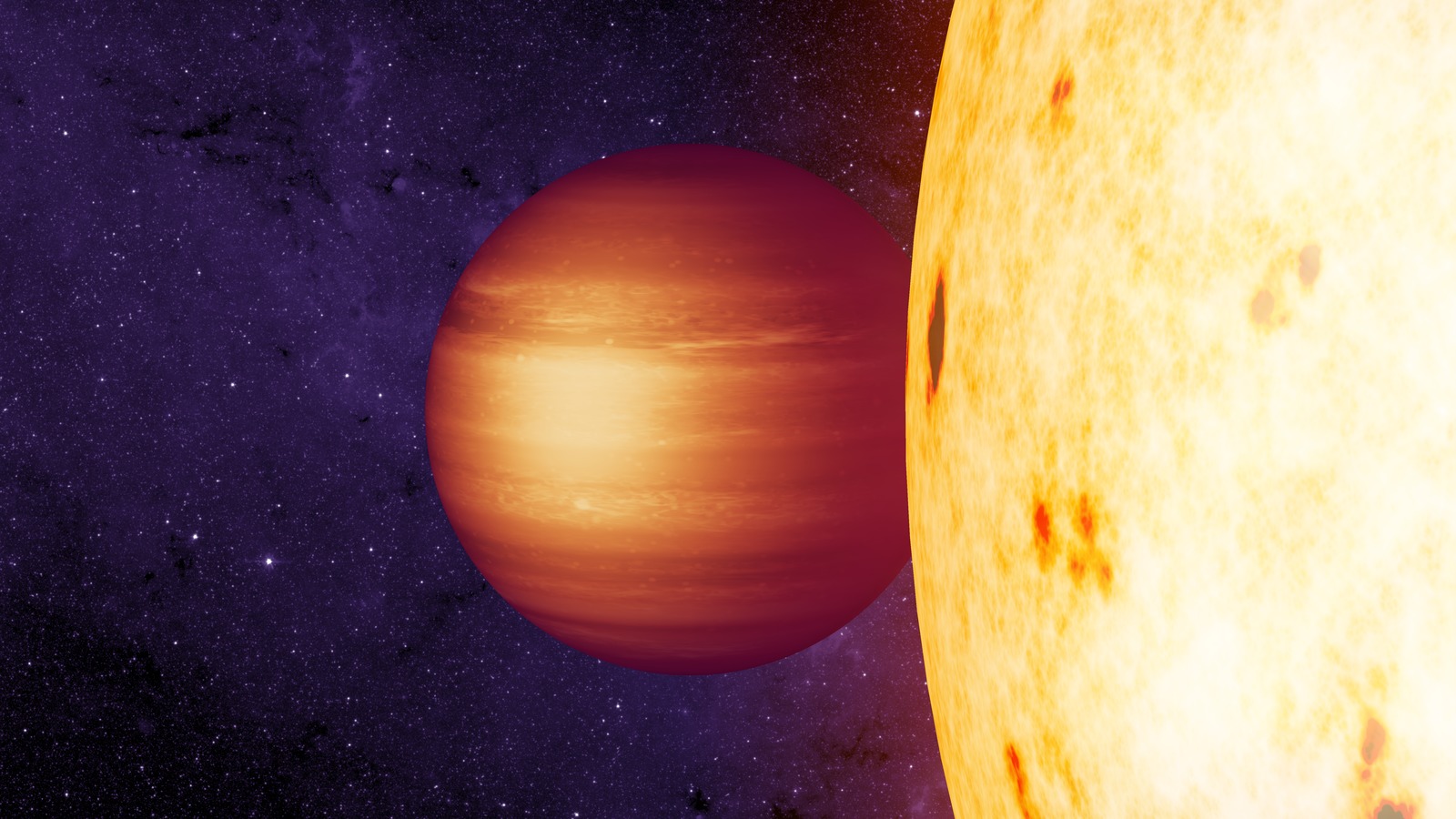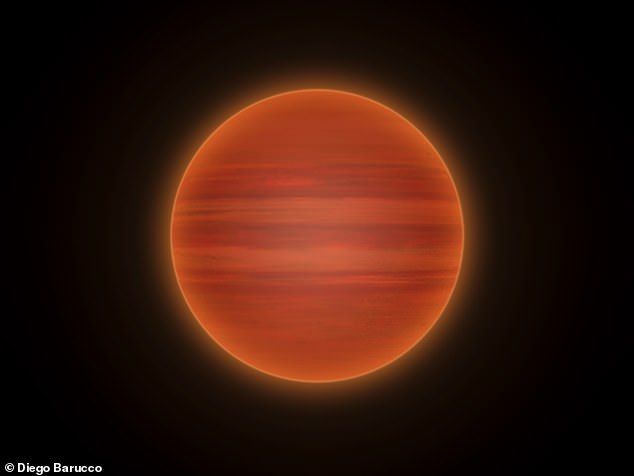Hot Jupiters are large gas planets that orbit their star closely. Unlike our Jupiter, which radiates more heat than it gets from the Sun, hot Jupiters get more heat from their star than from their interior. As a result, they can have a surface temperature of 1,000 K rather than the 160 K that Jupiter has. They are one of the more common types of exoplanets and the easiest type of exoplanet to discover.
Most hot Jupiters orbit red dwarf stars, which means that they receive a lot of infrared light to keep them warm. But this also means they can easily radiate off heat to maintain a steady temperature. One of the common side effects of being a hot Jupiter is that their upper atmosphere layers tend to swell and evaporate, creating either a fluffy low-density world or a dense world ᵴtriƥped of lighter elements, depending on the stage.

Artist view of a hot Jupiter closely orbiting its star. Credit: NASA/JPL-Caltech/T. Pyle (IPAC)
There are a few of these worlds that have extremely hot surfaces, to the point that they seem more star-like than planet-like. In 2017 astronomers discovered the hot Jupiter KELT-9b. It orbits a bright blue star so closely that its period is only 1.5 days. This means the planet is tidally locked with its star, with starside temperatures reaching more than 4,600 K. At this temperature the molecules in its atmosphere would disassociate, creating a high-pressure region that would drive atoms to the darkside of the planet, where they would recombine into molecules. Most of the stars in our galaxy have surface temperatures lower than the planet’s starside. KELT-9b was thought to be the exoplanet with the highest surface temperature, but recently a new world was discovered that’s even hotter.

This new world orbits a star named WD 0032?317, which isn’t a main sequence star. It’s a white dwarf with a mass about half that of the Sun and a surface temperature of 37,000 K. That’s hot even for a white dwarf, which means the star likely left the main sequence less than a million years ago. Its companion is a brown dwarf of about 75 Jupiter masses, so it isn’t technically a planet, but it’s also not a star. It orbits the white dwarf so closely that its period is only 2.5 hours.

The average temperatures of various exoplanets. Credit: Hallakoun, et al
Calculating the surface temperature of this companion isn’t easy, but we know it has to be really hot. White dwarfs emit light mostly in the ultraviolet range, while brown dwarfs emit mostly in the infrared. So it is much easier for the white dwarf to heat up the brown dwarf than it is for the brown dwarf to get rid of its heat energy. Even a rough calculation gives it a starside temperature roughly as hot as the Sun.
In a new paper, the team used various models to find an accurate surface temperature. The final result depends on whether the white dwarf has a core of mostly helium, or whether it has a core with a hybrid of other elements such as carbon. This would affect the amount of heat being transferred to the brown dwarf. Based on their calculations the starside of the brown dwarf likely has a surface temperature of about 8,000 K – 9,000 K. Its darkside temperature is likely about 2,000 K. Compare this to the surface temperature of the Sun, which is about 5,700 K.





